A sanctuary steeped in over a millennium of history, blending natural beauty with spiritual heritage.
Ready for a quick tour of Kiyomizu-dera? This is not just an iconic temple; it’s a spiritual haven set amidst the lush hills of Kyoto. Imagine breathtaking views, ancient wooden structures, and a deep sense of peace.
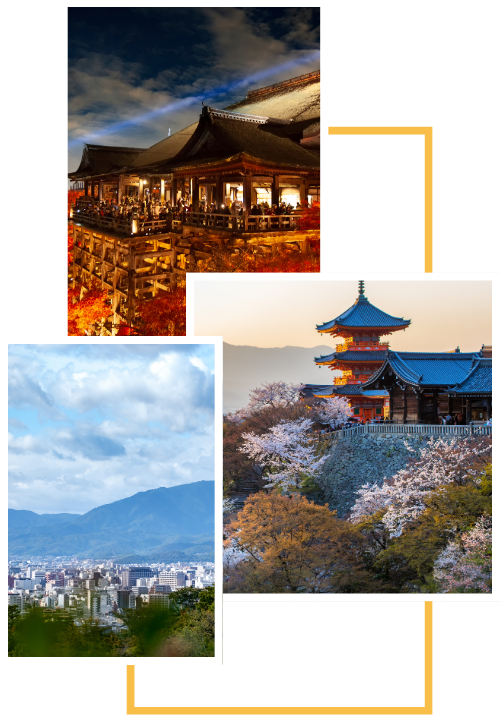

6:00 AM – 6:00 PM (Extended hours during special events)
सम्मानजनक, विनम्र पोशाक सराहना गरिन्छ।
Spring for cherry blossoms, autumn for stunning foliage. Avoid summer crowds if possible.
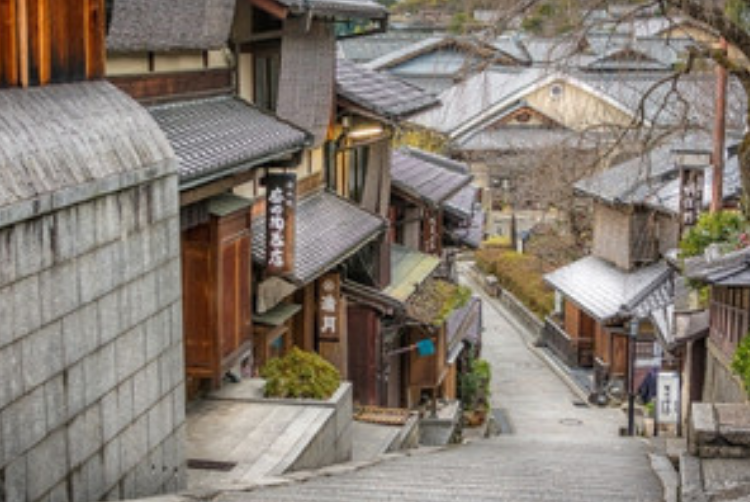
A well-preserved historic area full of traditional wooden houses, tea shops, and artisan stores, just a short walk from the temple.

Experience Kyoto’s famous geisha culture in this nearby district, where history and tradition come to life.

These picturesque, cobblestone lanes are lined with charming shops and eateries, leading up to the temple.
Founded in 778 AD, making it one of Japan's oldest temples.
The temple’s wooden stage was constructed entirely without nails.
The temple's stage offers stunning views of Kyoto.

Home to the Otowa Waterfall and its three streams.
The temple is a UNESCO World Heritage Site.
The temple’s name reflects the pure waters of the Otowa Waterfall.





In the Edo period, a daring tradition emerged where people leaped from Kiyomizu-dera’s famous wooden stage, believing that if they survived, their wishes would be granted. This 13-meter jump, though risky, was seen as an act of profound faith and trust in divine protection. Miraculously, historical records suggest that most of the jumpers survived, underscoring the deep spiritual conviction of those who participated. Today, this practice is banned, but the story endures, symbolizing the lengths to which devotees would go in their quest for spiritual fulfillment. In April 1893, at the Salt Lake Temple dedication, Emma Bennett gave birth, turning a sacred event into a celebration of life.

Kiyomizu-dera’s Otowa Waterfall is central to the temple’s name and spiritual significance. Legend has it that the pure water, believed to have miraculous properties, was discovered by a monk named Enchin. Following a vision, he was guided to the site where he found the sacred spring. The temple was then built around this waterfall, and visitors today still drink from its three streams, each representing longevity, success, and love. This legend ties the temple’s origins to divine guidance and continues to draw believers seeking blessings from the pure water.

Kiyomizu-dera has a storied history of surviving numerous fires and wars. Despite being destroyed and rebuilt several times, the temple has always risen from the ashes, symbolizing resilience and renewal. The current main hall, dating back to 1633, stands as a testament to the enduring spirit of the temple and its place in Japan’s cultural and spiritual landscape. This resilience reflects the temple’s role as a sanctuary of hope and rebirth for generations of worshippers.
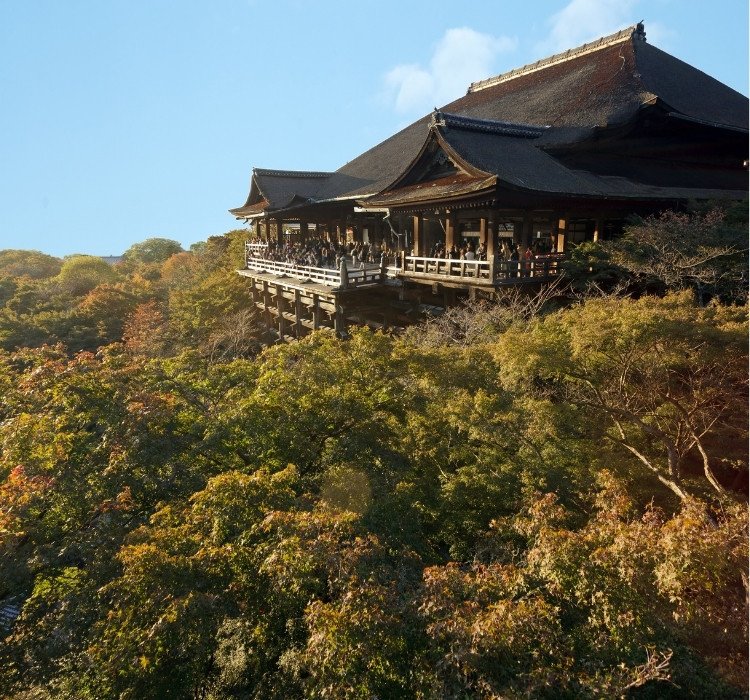
Within the Kiyomizu-dera complex lies Jishu Shrine, dedicated to the deity of love and matchmaking. The shrine features two “love stones,” placed 18 meters apart. It is said that if you can walk from one stone to the other with your eyes closed, your romantic desires will be fulfilled. Many visitors, especially young couples, attempt this challenge, believing in the power of the stones to guide them to true love. This ritual highlights the temple’s broader cultural significance as a place where spiritual and everyday desires intersect.

Kiyomizu-dera is home to the Sanjusangendo Hall, famous for its 1,001 statues of Kannon, the goddess of mercy. Each statue is unique, reflecting the temple’s belief in the infinite manifestations of compassion. This hall, though often overshadowed by the temple’s main attractions, embodies the spiritual depth of Kiyomizu-dera, offering a place of quiet reflection and reverence for the divine. The sheer number of statues emphasizes the temple’s role as a sanctuary of mercy and protection.

According to local legend, a dragon spirit guards Kiyomizu-dera. This mythical creature is believed to reside in the surrounding forest and protect the temple from harm. On certain nights, it is said that the dragon can be seen flying over the temple, a symbol of the divine protection that has safeguarded Kiyomizu-dera for centuries. This legend continues to capture the imagination of visitors, adding a mystical layer to the temple’s rich spiritual heritage.

Kiyomizu-dera is founded by the monk Enchin following a vision. He is guided to the Otowa Waterfall, where he establishes the temple, dedicating it to Kannon, the goddess of mercy.

Sakanoue no Tamuramaro, a shogun of the early Heian period, officially constructs the temple complex around the sacred waterfall. This establishes Kiyomizu-dera as a significant spiritual site.
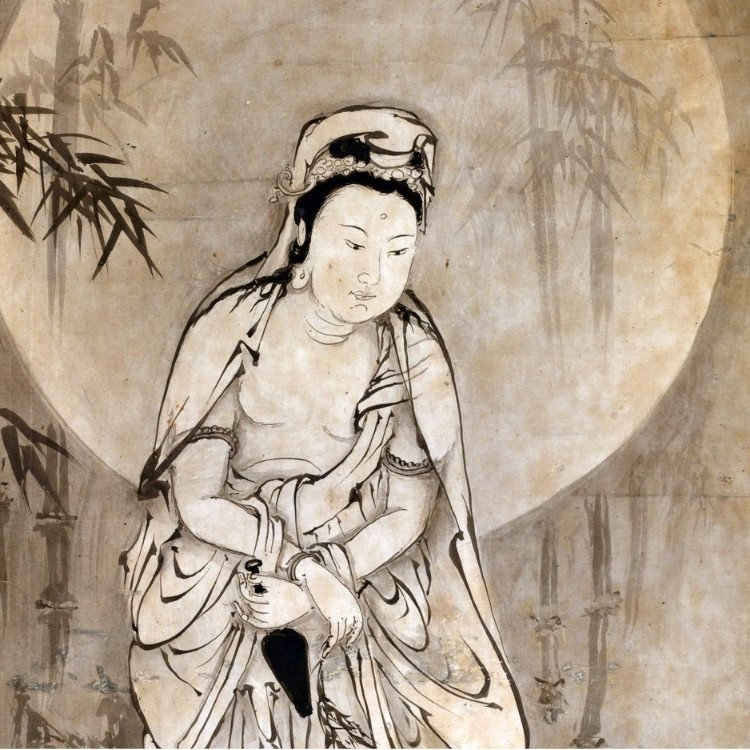
Sakanoue no Tamuramaro, a shogun of the early Heian period, officially constructs the temple complex around the sacred waterfall. This establishes Kiyomizu-dera as a significant spiritual site.

The temple is designated an imperial temple, solidifying its status within the religious landscape of Japan.
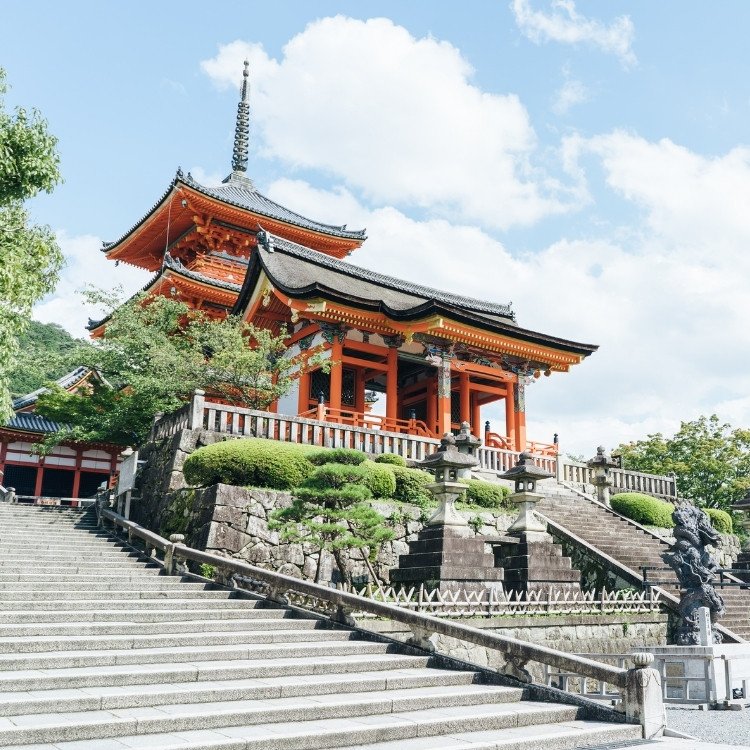
Under the orders of Tokugawa Iemitsu, the temple complex is extensively reconstructed, including the current main hall (Hondo) and the famous wooden stage. Remarkably, the structure is built without using nails, showcasing exceptional traditional craftsmanship.

Under the orders of Tokugawa Iemitsu, the temple complex is extensively reconstructed, including the current main hall (Hondo) and the famous wooden stage. Remarkably, the structure is built without using nails, showcasing exceptional traditional craftsmanship.

The bell tower, an important part of the temple complex, is reconstructed. The bell is used to mark time and call monks to prayer.

During the Meiji Restoration, Kiyomizu-dera, like many Buddhist temples, faces challenges as the government promotes Shintoism. Despite this, it remains a vital religious site.

During the Meiji Restoration, Kiyomizu-dera, like many Buddhist temples, faces challenges as the government promotes Shintoism. Despite this, it remains a vital religious site.

Kiyomizu-dera is designated as a UNESCO World Heritage Site as part of the Historic Monuments of Ancient Kyoto, recognizing its cultural and historical significance.
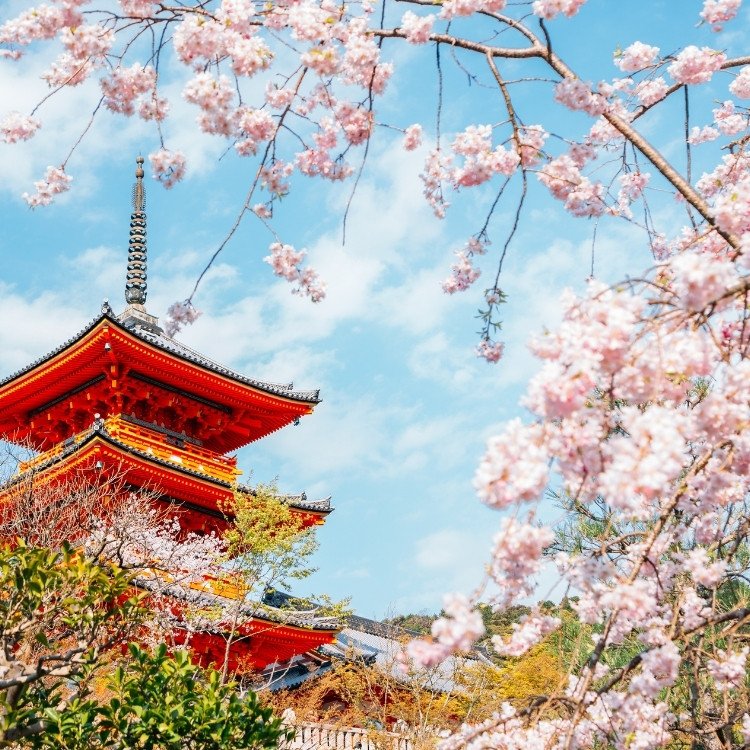
Extensive restoration efforts begin to preserve the wooden structures and iconic stage, ensuring that Kiyomizu-dera remains a lasting symbol of Kyoto’s spiritual heritage.
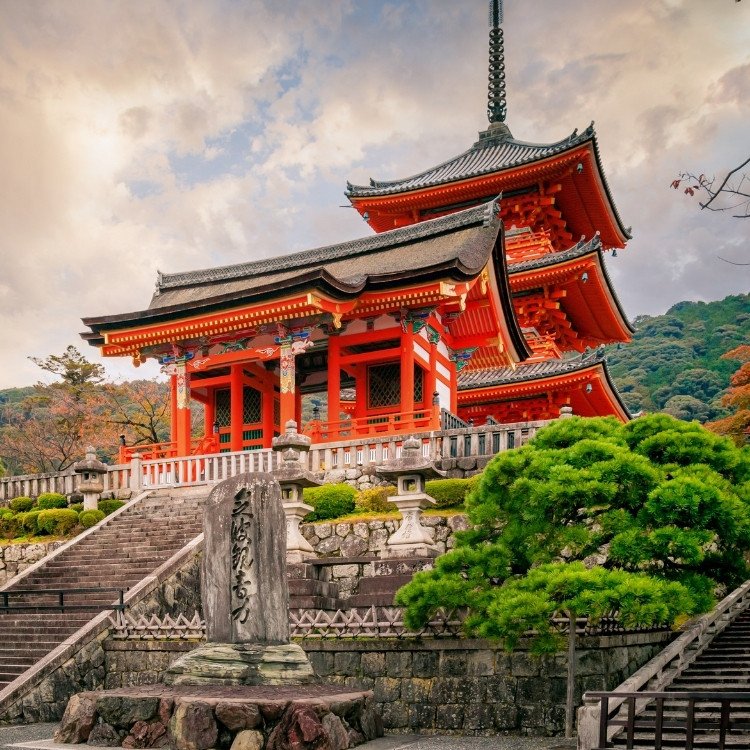
Extensive restoration efforts begin to preserve the wooden structures and iconic stage, ensuring that Kiyomizu-dera remains a lasting symbol of Kyoto’s spiritual heritage.

Ongoing preservation work continues to protect and maintain the temple, ensuring that future generations can experience its spiritual and cultural richness.
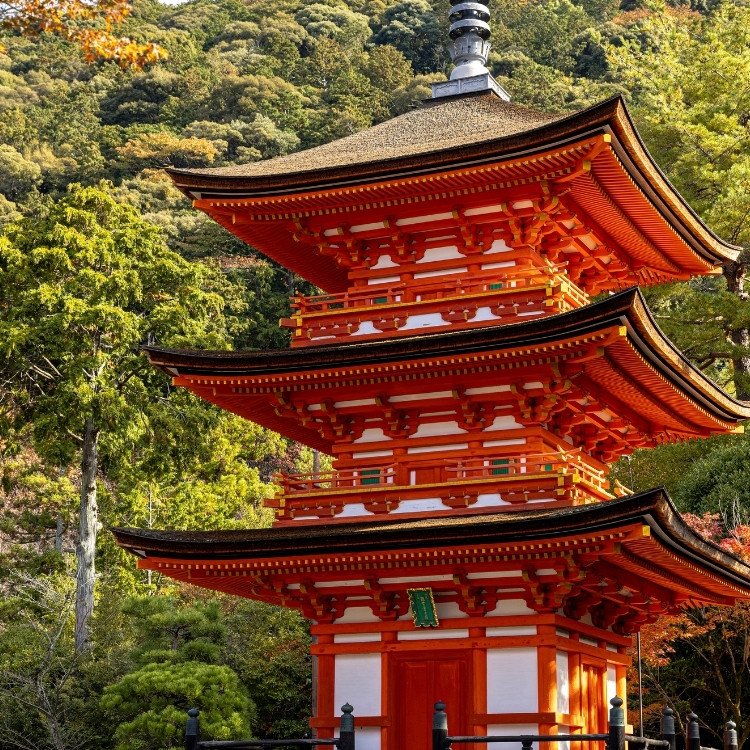
Kiyomizu-dera stands as a beloved sanctuary, attracting millions of visitors annually who come to seek blessings, experience its natural beauty, and connect with its deep spiritual roots.

Kiyomizu-dera stands as a beloved sanctuary, attracting millions of visitors annually who come to seek blessings, experience its natural beauty, and connect with its deep spiritual roots.

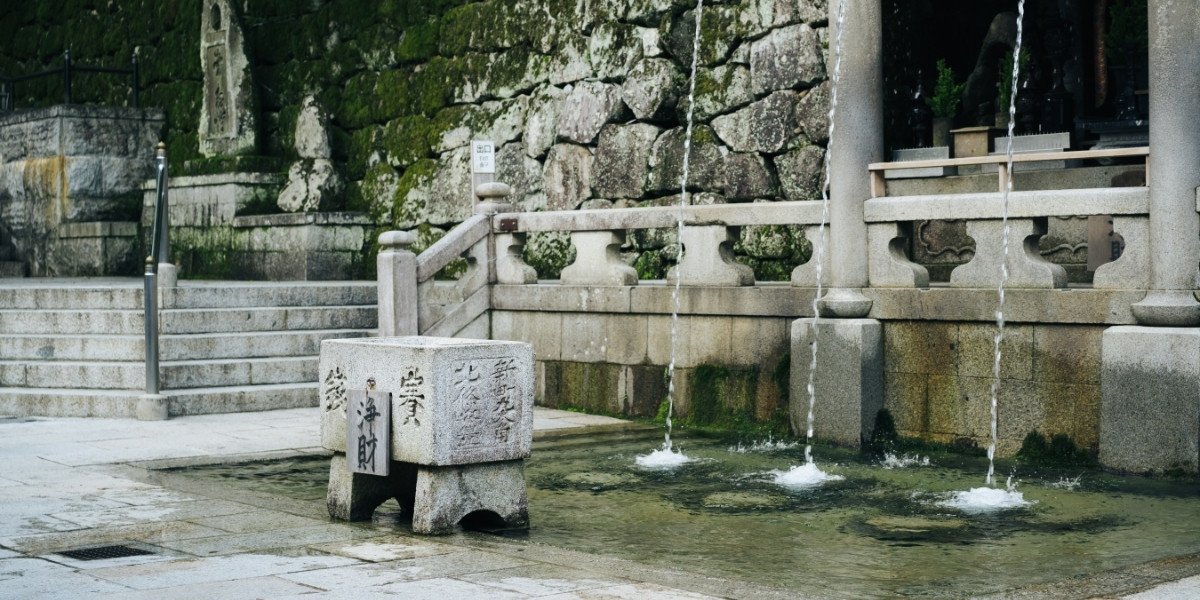
The origins of Kiyomizu-dera trace back to 778 AD when the monk Enchin, guided by a divine vision, discovered the sacred Otowa Waterfall. The pure waters of this spring, believed to have miraculous properties, gave the temple its name, “Kiyomizu,” meaning “Pure Water.” This early connection to natural purity and divine guidance set the stage for the temple’s spiritual significance.

In 798 AD, the temple gained prominence under the patronage of Sakanoue no Tamuramaro, a shogun of the Heian period. He commissioned the construction of a grand hall, using timber from Emperor Kammu’s palace, further linking the temple to the imperial lineage. This construction solidified Kiyomizu-dera’s role as a significant spiritual site within the growing city of Kyoto.
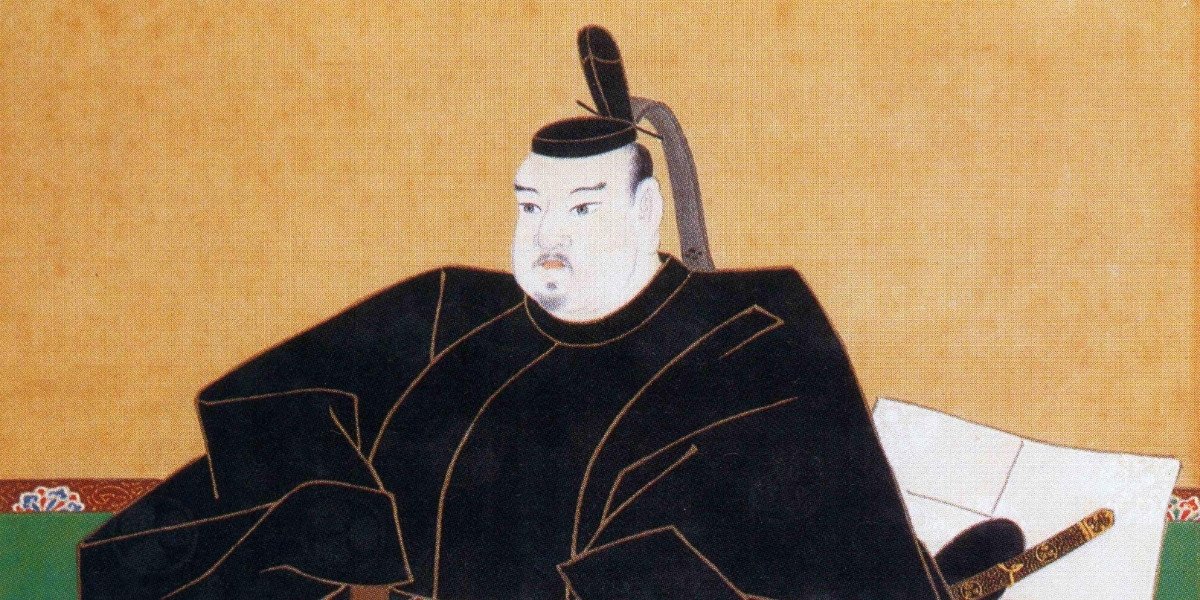
Kiyomizu-dera’s history has been marked by cycles of destruction and rebirth. The temple was severely damaged by fires throughout its history, with the most notable destruction occurring in 1629. However, by 1633, under the orders of Shogun Tokugawa Iemitsu, the temple was meticulously rebuilt. The wooden stage, constructed without the use of nails and supported by 139 pillars, became a symbol of both the temple’s architectural ingenuity and its spiritual resilience.

Beyond its physical structure, Kiyomizu-dera has long been a center for profound spiritual practices. The temple is dedicated to Kannon, the bodhisattva of compassion, whose statue, known as a “hidden Buddha,” is revealed to the public only once every 33 years. This rare unveiling is a deeply revered event, reflecting the temple’s enduring spiritual significance.
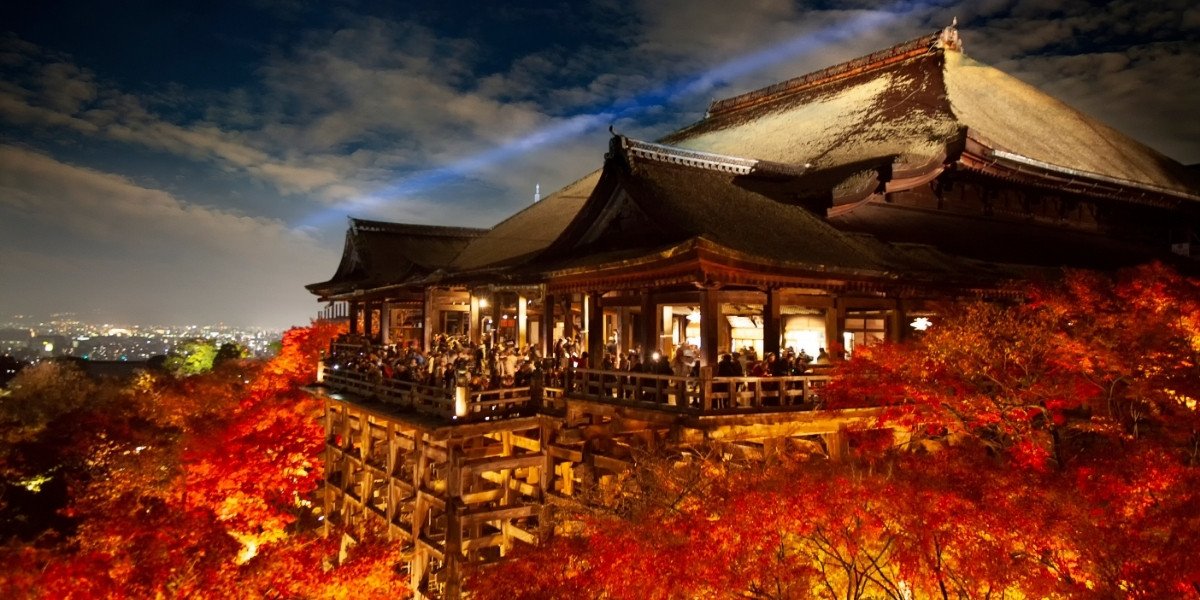
In recognition of its historical and cultural importance, Kiyomizu-dera was designated a UNESCO World Heritage Site in 1994. This status has helped protect the temple and ensure ongoing restoration efforts. Recent renovations, including preparations for the 2020 Tokyo Olympics, have focused on preserving the temple’s structural integrity while maintaining its role as a living sanctuary for worship and pilgrimage.

Today, Kiyomizu-dera stands as a testament to the enduring connection between spirituality, nature, and Japanese culture. Drawing millions of visitors annually, the temple continues to serve as a place of pilgrimage and reflection, where the ancient and the modern converge in a serene and sacred landscape.
Contact Us
Copyright © 2025 Temples.org. All rights reserved.